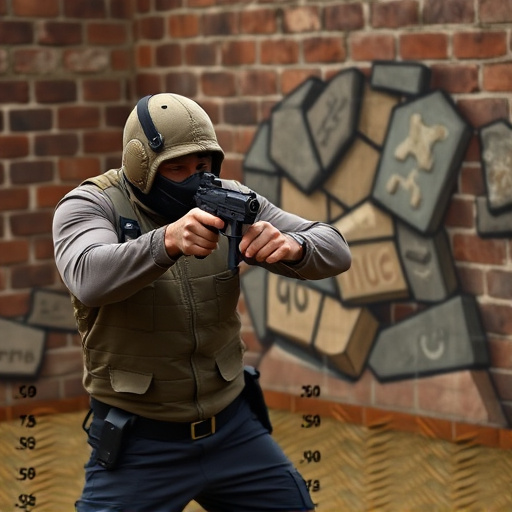To legally carry pepper spray, research local and state laws, obtain a permit with necessary documentation, understand canister types and capacities, practice safe handling and application techniques, and familiarize yourself with regional regulations regarding concealment or holstering for personal security.
Personal security is a growing concern, making pepper spray a valuable tool for self-defense. But navigating legalities can be tricky. This guide breaks down everything you need to know about legally carrying pepper spray. From understanding regional regulations and obtaining permits to learning about canister types and safety training, we’ll walk you through the process. Discover how to responsibly equip yourself with this powerful personal security measure.
- Understanding Pepper Spray Laws: Regional Differences Explained
- Obtaining a Permit: Step-by-Step Guide for Legal Ownership
- Canister Types and Capacity: What You Need to Know
- Safety and Training: Responsibly Handling Your Pepper Spray
Understanding Pepper Spray Laws: Regional Differences Explained
Carrying pepper spray for personal security is a significant decision, and understanding the legal framework surrounding it is crucial. The regulations on how to legally carry pepper spray vary greatly from region to region, so it’s essential to know the specific laws in your area. In some places, you might need a permit or license to possess and carry pepper spray, while others may allow it without formal authorization.
When considering how to legally carry pepper spray, familiarize yourself with local and state regulations. These rules often consider factors such as intended use, quantity allowed, and the circumstances under which it can be carried. Staying informed ensures you remain within the law and can confidently protect yourself should the need arise.
Obtaining a Permit: Step-by-Step Guide for Legal Ownership
Obtaining a permit is a crucial step in ensuring legal ownership of a pepper spray canister. The process varies by location, but generally involves a few key steps. First, research your local and state laws regarding pepper spray possession and use. Some areas may require specific types of training or certifications for legal carrying.
Next, apply for a permit through the relevant authority. This often includes filling out an application form, providing identification, and possibly paying a fee. You may also need to attend a safety course or demonstrate proficiency in using the spray. Once approved, your permit will outline the specific regulations and restrictions around carrying pepper spray, ensuring you remain within legal boundaries when protecting yourself.
Canister Types and Capacity: What You Need to Know
When considering personal security, understanding the different canister types and capacities of pepper spray is essential for making an informed decision. There are typically two main types: aerosol and gel. Aerosol canisters are the most common, releasing a cloud of pepper spray that covers a wider area. These usually come in standard 20-gram or 60-gram sizes, allowing for easy concealment and quick deployment. Gel pepper spray, on the other hand, is thicker and sticks to targets, making it more effective at close range. It’s often preferred by those seeking maximum stoppower.
Knowing how to legally carry pepper spray is crucial for its effectiveness as a personal security measure. Different regions have varying laws regarding pepper spray ownership and carrying restrictions. Always check local legislation before purchasing to ensure compliance. Legally permitted carry options include keeping the spray in your purse or backpack, or holstering it like a self-defense tool. Ensure you understand the legal implications of carrying pepper spray to avoid any misunderstandings with law enforcement.
Safety and Training: Responsibly Handling Your Pepper Spray
Personal security inflammatory spray canisters, also known as pepper spray, are powerful tools designed for self-defense. However, their effective and responsible use hinges on adequate safety training. Understanding how to handle pepper spray is crucial not only for its optimal effectiveness but also to ensure user safety and legal compliance.
Learning the proper techniques for deploying pepper spray begins with comprehensive training. This includes knowing the different types of spray patterns, safe distances for application, and post-spray decontamination procedures. Training sessions typically cover how to legally carry pepper spray, which varies by jurisdiction, and emphasize responsible usage to avoid injury to oneself or others. Regular practice sessions are equally important to ensure users remain proficient in their skills.
Carrying pepper spray for personal security is a significant decision that requires understanding local laws, obtaining proper permits, and ensuring responsible handling. By navigating the legal aspects, choosing the right canister type, and undergoing training, you can confidently exercise your right to self-defense while adhering to regulations. Remember, knowledge is key; stay informed about your rights and responsibilities when it comes to how to legally carry pepper spray for personal security.
